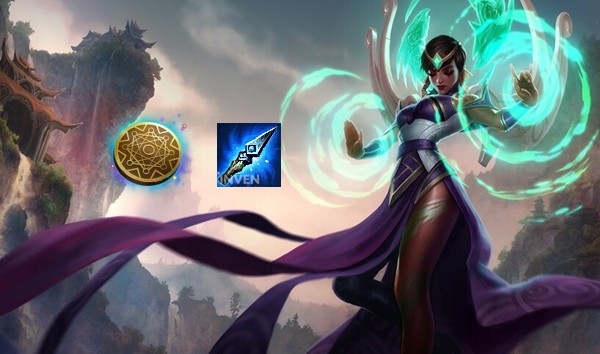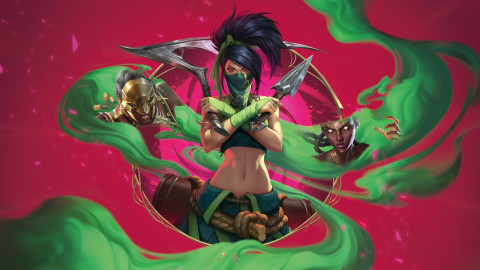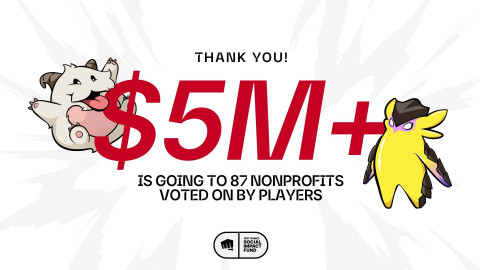
Played on a 19x19 grid board, Go is a game in which two players take turns placing stones. The goal is simple: to surround more territory than the opponent. Go has a very simple ruleset and victory condition; with these qualities, it has become one of the oldest classic board games in history.
However, despite its simple ruleset, the strategy involved with Go runs deeper than any other game. Those that play Go competitively spend countless hours studying the game to find the best way to defeat their opponents. Players find the most optimal way to play the game, creating a standard way to play Go. Players then search for flaws in that 'standard play' to come up with something new to counter the old style. A play that was seen as masterful could easily become an inferior move with time. Just like that, for 3,000 years, the game's "meta" constantly evolved.
Released in October of 2009, League of Legends is in the midst of its 10th year. In a world where video games rapidly cycle in and out of popularity, League of Legends has become one of the oldest, long-lasting video games. Around the time of its release, League of Legends firmly asserted itself as its own unique game between its MOBA competitors - DoTA and HoN - and now, the game has become the leading franchise in the MOBA gaming market.
A key factor in League of Legends' ability to remain fun and fresh throughout the long years is in its updates. Since release, Riot Games constantly updated their game. They periodically update the visuals, release new playable characters, new game modes, and new game mechanics such as the elemental dragons. Thanks to these updates, players were able to keep having fun with the game for nearly 10 years.
Those that love playing League of Legends spend countless hours looking for the most optimal way to play the game, and that has become the driving force of League of Legends. With over 100 champions, over 200 items, and the creativity of the League players, many unique and diverse ways to play the game have been developed over the course of League's lifetime. The 'meta' has constantly evolved.

However, it feels like Riot sometimes intervenes in the process of meta development to an unnecessary degree. On February 12, Riot Games stated in their patch notes that "Recent days have ushered in the "Frostmancy" strategy, This strategy throws several laning skills out the window, erases the gold tradeoffs for missing last hits, and gives opponents no means of interfering with your plan," and thus restricted the usage of Frostmancy to the bot lane.
With the possibility of playing the 'Frostmancy strategy' closed off, champions who utilized it, such as Karma and Zilean, were also closed off. The large amount of research and practice that players put into developing the strategy were rendered meaningless; this negatively affected players who enjoy finding new ways to play the game, and eliminated the possibility of professional esports teams utilizing and developing counters to the Frostmancy strategy.
This wasn't the first time that Riot had 'fixed' strategies developed by its player base. Before the Frostmancy hotfix, the "Karthus-Nunu," and "Master Yi-Taric,' AKA "gold funneling" meta was hot-fixed. The most well-known case is when Riot put an end to the "lane swap" meta through a patch.
What's unfortunate about all this is that, due to the patches, it closed off all doors for players and teams to find and develop methods to defeat those seemingly overpowered strategies. Finding ways to counter a powerful strategy is just as satisfying as developing a powerful strategy. This also terminates the gradual evolution of tactics; the meta isn't given the chance to become deeper and more detailed.
Many players and professional teams that witnessed the 'Frostmancy strategy' in play stated that it isn't the 'standard play' and that it doesn't guarantee victory. In actuality, not every player or team that utilized the strategy were able to win with it. In other words, the 'Frostmancy strategy' was just a unique way to play the game, and was not a tactic that harmed the meta as a whole.
Looking at the general direction of Riot's patches, it feels that Riot wants their player base to stay within a predictable boundary. While it's understandable that the company needs to keep the game healthy and balanced, shouldn't the users be granted a little bit more freedom in shaping the meta?

Throughout video game history, players have always found interesting ways to play games, with many of them becoming popular elements that make the game more fun.
Regarded as the progenitor of fighting games, Street Fighter at first didn't allow basic attacks such as heavy kick, light kick, and heavy punch to work in tandem with the command keys of attacks such as Hadouken. But when the game released, users quickly found that heavy punch could be used in tandem with Shoryuken and that sitting light kick could be used with Hadouken. This then later cemented itself as a feature; a combo system that became an important element in every fighting game.
The progenitor of MOBA games, DoTA, was a user-created map for Warcraft 3. The game allowed characters to attack and kill friendly units, so players took advantage of this mechanic by killing their own units, preventing their opponents from collecting gold. Preventing opponents from farming experience and gold became a tactic known as "denying".
Before the rise of League of Legends esports, the most popular esport was StarCraft. There was a bug with the Zerg Lurkers that made them unable to attack when commanded to attack an enemy building in the fog of war while burrowed. Players quickly used this bug to their advantage by using it as a method to keep the Lurkers from attacking until the enemy units moved directly on top of the Lurker, dealing massive damage to them. This became known as the "Hold Lurker" strategy.
There are countless more examples of times where gamers that love a specific game found interesting ways to play a game, develop it, and craft it into something that makes the game more enjoyable. To the game developers, it may just be a bug to them, but to the users, it becomes a strategy - a piece of the meta - that adds more depth to the game.
Riot Games have done a fantastic job developing League of Legends into the game it is today. The direction of development that Riot had set for League is by no means wrong, but they must not forget that at times, the process has gradually sapped the players' freedom to make creative ways to enjoy the game.
The freedom Go players have is why Go has been able to remain a popular game for 3,000 years, without a single update. If League of Legends is to remain a staple of MOBA games for more than 10, 20, and maybe even 100 years, isn't it time to craft the keystone for it? Sometimes, it is better to give the players a chance to explore and search for solutions themselves rather than fix something instantly.
Sort by:
Comments :0







